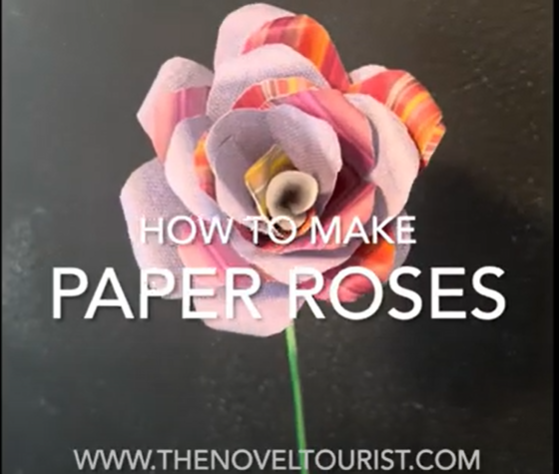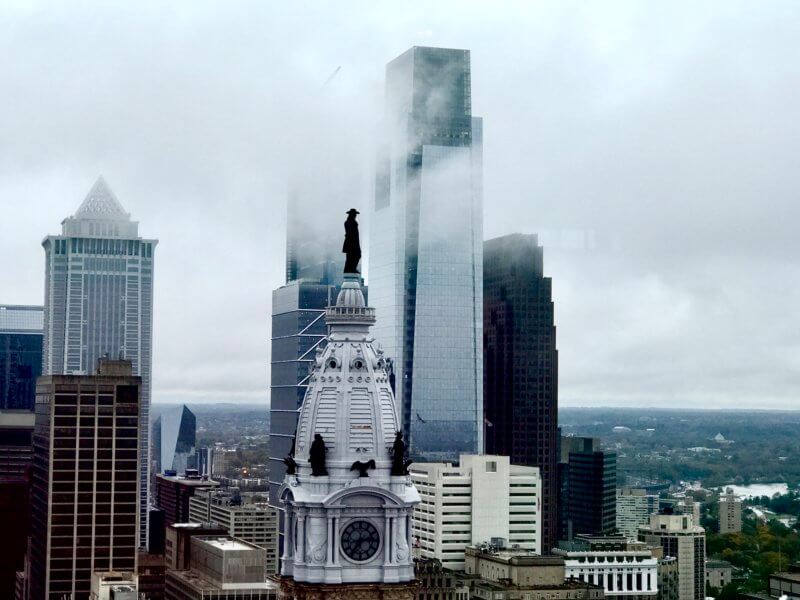Artsy bibliophiles are going to love this novel destination mashup. It’s an artistic literary adventure to the Barnes Foundation museum. The Blue Period is a term used to define the art produced by Spanish painter Pablo Picasso between 1901 and 1904. Picasso’s life leading up to and including the Blue Period are captured in Luke Jerod Kummer’s historical fiction and imaginative novel, aptly, albeit uncreatively, named, The Blue Period: A Novel.
The Barnes Foundation’s collection in Philadelphia contains several notable pieces from Picasso’s Blue Period. I paired these two together for a wonderful literary art experience with my Philadelphia based book club.
The Barnes Foundation and The Blue Period

We visited the Barnes Foundation during one of its free Sundays. (Scroll down for a Blue Period location map that you can use when you visit the Barnes!) After entering the main lobby using the very easy automated entrance system and checking our bags and coats downstairs, we got in line to enter the galleries. (Note: If you don’t want to check a bag or coat, don’t bring anything big or bulky).
Given that it was a free entry day, the line was long. That’s okay! It gave us plenty of time to discuss the book. Once inside we discovered why the line was so long. They only admit a certain number of people at a time. We all really appreciated that because it allowed us to enjoy the art without throngs of people blocking our view. You can stay as long as you like (well, until closing, of course!).
If you are in the Philadelphia area and looking to meet new friends and go on literary adventures like this trip to the Barnes Foundation, check out the upcoming Novel Tourist book club events: The Novel Tourists of Philadelphia
Dr. Albert Barnes (1872–1951), who achieved a medical degree at the age of 20, earned his fortune when he developed a life-saving antiseptic. Over three decades, he collected some of the world’s most important impressionist, post-impressionist, and modern paintings, including works by Renoir, Cézanne, Matisse, and Picasso. Dr. Barnes believed passionately that art—like people—should not be segregated. The museum is accessible and there are plenty of free days to visit!
Dr. Barnes’ collection contains 46 Picasso’s, including at least 15 from the Blue and Rose periods. One of the paintings, “Group of Catalans in Montmartre: Pichot, Mañach, Casagemas, Brossa, Picasso, and Gener,” gives us a clear vision of Picasso and his friends during his Blue Period. (Room 8, South wall). One of those friends is a main character throughout Kummer’s novel.
What was the Blue Period?
During the Blue Period, Picasso produced essentially monochromatic paintings in shades of blue and blue-green, only occasionally warmed by other colors. The Blue Period was a time during the very early 1900s when Picasso was just a struggling young painter from Spain. Picasso possessed an ability to make tenderly lifelike works – increasingly melancholy in temperament – that repeatedly failed to sell. (Basically, no one wanted to hang sad stuff on their walls). Today, it’s some of his most cherished work.
The Blue Period was followed by the Rose Period. As you can guess, the paintings and sketches from the Rose Period are…well, rose colored. The Rose Period reflects Picasso’s work as he progressed out of the sadness that dominated the Blue Period and before his work evolved to the abstract figures for which he is best known. (Perhaps he was wearing rose colored glasses…kidding!!).
The Blue Period: A Novel
Bringing the exuberance of the era vividly to life, The Blue Period: A Novel, by Luke Jerod Kummer, is a richly imagined portrait of Picasso’s coming of age that intertwines the love, death, lust, and friendships that inspired Picasso’s early works. The book covers Picasso’s life from childhood through his early twenties, and specifically his life during the period known as The Blue Period.
Our book club members argued over the reason Picasso used an overabundance of blue in his art during this time. Was it to reflect his sadness over the death of a friend or maybe a failed romance? Perhaps it was simply a lack of funds to purchase other colors? Many of us were convinced it was an emotional outlet and not just a lack of funds. Kummer’s novel walks us through the possibilities.
Certainly the suicide of Picasso’s close friend who took his life in Paris, France was pivotal. Picasso’s friend was apparently despondent over a fallout with Germaine Pichot, a French model who was his love interest and the subject of a number of Picasso’s paintings. (Sadly, the Barnes Foundation collection does include any of Picasso’s paintings of Germaine). Kummer’s novel reflects research that suggests that Germaine was also the subject of Picasso’s own love interest, despite his friendship with her lover. Could his friend’s death have been the reason for the blue shades dominating Picasso’s work? Some say yes.

Picasso’s choice of austere color and sometimes doleful subject matter—prostitutes, beggars and drunks—could also have been influenced by his journey through Spain and into Paris. In the summer of 1901, Picasso secured a letter from a physician to gain admittance to the Saint-Lazare women’s prison and infirmary. His Blue Period work depicts the plight and unfathomable suffering of convicts who were confined there – sometimes alongside their children – for petty crimes or being infected with syphilis, which was a deadly disease then. It’s possible the blue cast was to reflect the sadness of their plight.
Or maybe he just lacked the funds to purchase other colors? As you’ll see in the novel, Picasso truly was a starving artist in his early years. What becomes abundantly clear from a trip to the Barnes is that, regardless of the basis, the Blue Period works are incredibly moving.
Take a Novel Adventure to the Barnes Foundation
If you are fortunate to live in or visit Philadelphia, Pennsylvania, you can tour the Barnes Foundation and see some Blue Period works yourself. Use the guide below to find the Blue Period and Rose Period pieces in the Barnes collection and take your own novel adventure inspired by Kummer’s novel.
The Blue Period Collection at the Barnes Foundation
If you’ve read Kummer’s novel and want to check out some Blue Period (and Rose Period) Picassos, here is what you will find on display from the Barnes Foundation’s permanent collection.
Tip: Pick up a map on your way in and then, starting in the main room, work your way through the various gallery rooms in the Foundation. Picasso’s Blue Period art is easy to spot. It’s all the same shade of blue!
| Location | Title/date |
| Main Room, South Wall | The Peasants, 1906. |
| Room 8, South Wall | Group of Catalans in Montmartre: Pichot, Mañach, Casagemas, Brossa, Picasso, and Gener, 1900. |
| Room 10, North Wall | Woman Seated on Striped Floor, between 1900 and 1905. |
| Room 10, East Wall | At the Theater (The Courtesan), 1901. |
| Room 10, West Wall | Young Acrobat, 1905. |
| Room 10, West Wall | Three Nudes (Trois nus), 1906. |
| Room 10, West Wall | Standing Nude in Front of a Red Arch, 1906. |
| Room 10, West Wall | Nude in Profile (Femme nue de profil), 1906. |
| Room 10, South Wall | Young Woman Holding a Cigarette (Jeune femme tenant une cigarette), 1901. |
| Room 18, North Wall | The Ascetic (L’ Ascète), 1903. |
| Room 19, North Wall (Not Picasso)* | Street in Montmartre, c. 1914 by Maurice Utrillo (French 1883-1955) |
| Room 19, East Wall | Child Seated in an Armchair ( Enfant assis dans un fauteuil), 1901. |
| Room 19, East Wall | Acrobat and Young Harlequin (Acrobate et jeune Arlequin), 1905. |
| Room 20, West Wall | Two Women in Blue Fixing Hair, 1905–1906. |
| Room 20, North Wall | Nude Seated on Bed, c. 1904-1905. |
| Room 23, West Wall | Seated Male Nude (Homme nu assis), 1906. |
*not a Picasso, but Montmarte was his home for several years.
Plan your visit to the Barnes Foundation:

Where: 2025 Benjamin Franklin Parkway Philadelphia, PA 19130
Telephone: 215-278-7000
Website: barnesfoundation.org
I hope you enjoy your visit! I sure did!
Read my (no spoilers) review of The Blue Period: A Novel
Want more literary art adventure in your life?
Check out one of these Books Set in a Museum. If you are an Andrew Wyeth fan, you’ll love A Piece of the World. Like The Blue Period, A Piece of the World is a fictionalized rendering of a real person. In this case, the muse Christina who is captured in Wyeth’s famous painting, Christina’s World.
If you love pairing great reads with great places to visit, be sure to subscribe to The Novel Tourist newsletter to stay up-to-date with all of the activity and travel inspiring reading suggestions. In or near Philly (or planning a visit?) and looking for an inspiring community of readers or just more great ideas, check out The Novel Tourists of Philadelphia Facebook group.
Know others who love to read and do fun stuff? They’ll thank you for sharing this post! And so do I!




Leave a Reply